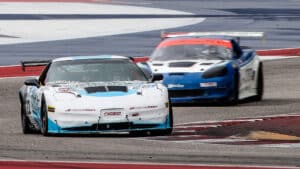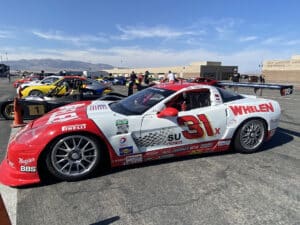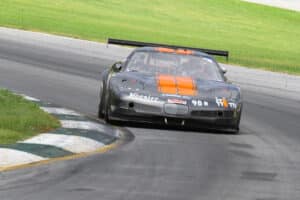
Everything You Wanted to Know About NASA's Super Touring Racing Series
If you’re looking to race in a series that lets you build the car the way you like, then Super Touring could be for you. With an open rules structure, Super Touring/Super Unlimited gives you the freedom to build the car you like using the parts you choose. The amazing part of Super Touring/Super Unlimited is how close the racing is despite the open nature of the rules set. With classes from the no-holds-barred Super Unlimited to the more sedate Super Touring 5 and Super Touring 6 classes, you are sure to find a suitable place in which to race.
NASA ST/SU provides a venue for spirited on-track competition in high-performance racecars of all makes, models and types. Several key factors are considered in classing vehicles, using an “Adjusted Weight/Power Ratio” as the ultimate equalizer between vehicles. The relatively few modification-specific rules will allow competitors to configure their cars to perform at an optimal level by using aftermarket parts, providing an opportunity for promotional exposure for the competitors’ sponsors, aftermarket tuners, parts manufacturers, and the vehicle manufacturers. Additionally, these series should provide a stage to showcase driving talent, in hopes that the most talented drivers will advance to even higher-level professional series. The format of the rules encourages direct crossover from both high-level NASA TT classes and race classes from multiple organizations.
Super Touring 1-4
Super Touring 5 and 6
Recent listings from AutoTrader.com
Varies by car and horsepower. You can download the class calculator here:
https://form.jotform.com/drivenasa/st-tt-car-classification-form
Some recent listings on RacingJunk.com
Vehicle modifications are virtually unlimited, but certain modifications incur additional “modification factors” that affect the horsepower-to-weight ratio. No active aero devices allowed, no nitrous oxide, up to 300 pounds of ballast permitted.
Tires, brands and prices
Tire sizes vary greatly, but here’s a sampling of popular sizes and brands:
Brakes, brands and prices
Check the NASA Contingencies page for the latest programs.
Ford Performance, Nissan Motorsports, Mazda Motorsports
Benefits
Fast, fair competition with rules that allow for creativity and innovation with a variety of cars.
Challenges
The rules take some serious study. Super Touring is not a class for the budget conscious. The cars can become expensive, as can the consumables.
Super Touring Resources
Questions and Answers to Feed Your Curiosity
Latest Super Touring News Around The Country
Wouldn’t it be great if there were a NASA contingency and Member Benefits partner that offered rewards and discounts on hardcore racing parts we […]
If the popular models from BMW and Honda represent the proven path for the pragmatic, Nissan’s venerable 350Z might be the pick for the iconoclast. […]
Longtime NASA contingency partner Motion Control Suspension has renewed its contingency program for 2024. One new addition to the program is that […]
For the February Move of the Month contest, NASA Utah Super Touring 4 and Spec Z racer Chad Aalders scooped up 38 percent of votes compared with 29 […]
Chuckwalla Valley Raceway roared to life February 17-18 with a series of Super Touring races that saw spirited competition across various classes. […]
What Super Touring Competitors Say



Get On-Board with Super Touring Drivers
Super Touring Series Contacts